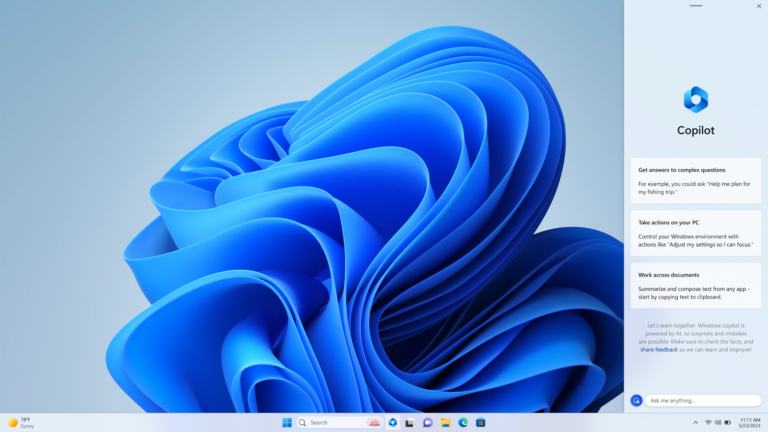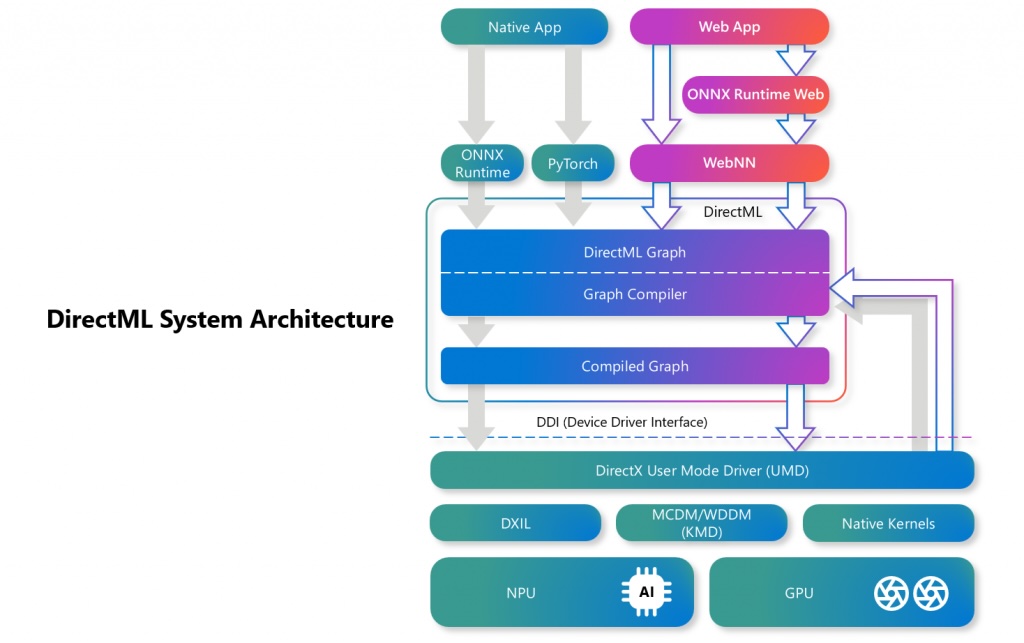
There was news for Windows desktop developers at Microsoft’s Build event, under way in Seattle, including a Copilot Runtime for AI development, native PyTorch libraries, support for Windows on Arm including new Snapdragon Dev Kit hardware, and the surprising return of Windows Presentation Foundation (WPF) as a “recommended” framework.
The Copilot Runtime includes a set of APIs for over 40 AI models which will ship with Windows, including DiskANN nearest neighbour search, Windows Studio Effects to apply special effects to camera and microphone, the Phi Silica API for language processing, a text recognition API, and the Recall API for finding past activity, based on an AI-powered semantic index. The API documentation states that there is “more to come, including Live Captions Translations, Semantic Search, Retrieval Augmented Generation (RAG), Text Summarization, and Image Super Resolution.”

DirectML is a low-level API for machine learning which, like the graphics API DirectX, abstracts different hardware and supports GPUs, NPUs (neural processing units) and will also have CPU integration.
One of the APIs available through DirectML is PyTorch, allowing Python developers to use native PyTorch support with pip install torch-directml. The version of PyTorch is up to 2.2. This can be used both in Windows and in the WSL (Windows Subsystem for Linux) 2 environment.
DevDrive, which uses the ReFS file system in place of the venerable NTFS, has improvements coming in Windows 11 24H2 including block cloning, which greatly speeds copying of large files. According to Microsoft’s benchmarks, copying a 10GB file could be more than 12 times quicker and take just 641ms.
Windows on Arm, which has struggled for years to get traction, looks useful at last, with the new “Copilot+” PCs being based on Qualcomm Snapdragon X Elite Arm processors and the arrival of core applications such as Google’s Chrome browser built natively for Windows on Arm. Developers are now better supported with Arm-native SQL Server Developer Tools in Visual Studio, Blender 3D Studio in Alpha preview for Arm64, Arm native Docker tools, and more.
Developers keen to get started with the latest Windows on Arm may take advantage of Qualcomm’s Snapdragon Dev Kit for Windows, which for $899 will provide a small PC powered by a Snapdragon X Elite processor, with a 12-core Oryon CPU, 42MB cache, Adreno GPU, Hexagon NPU, 32GB RAM and 512GB NVMe storage. This avoids the need to purchase a pricier Surface Pro Copilot+ PC.

File Explorer will now integrate with Git and other version control protocols to show file status and commit messages. File Explorer is also getting support for 7zip and TAR archiving.
In a surprising twist for developers who have followed the tangled evolution of Microsoft’s Windows desktop frameworks, corporate VP of Windows devices Pavan Davuluri stated that “If you are looking to develop native Windows applications using our preferred UI development language, XAML, we recommend using either WinUI 3 or WPF.” Although Davuluri asks developers to “first consider WinUI 3,” which is the modern framework, he also said that WPF is “an excellent choice” and one with a “deep ecosystem”.
WPF goes right back to the launch of Windows Vista in 2006, and is a .NET desktop framework built on DirectX, in contrast to the even older Windows Forms which wraps the Win32 API. Business developers often prefer Windows Forms for its quick and easy UI designer, but WPF offers more advanced effects and better scaling. Visual Studio is built with WPF. Microsoft though has hitherto done little more than minimal work on the framework to keep it current, porting it to work with .NET Core as well as the Windows-only .NET Framework, and making it open source. Recent messaging to developers has focused on WinUI 3.
Now though Davuluri says that “both WinUI 3 and WPF can take advantage of all Windows has to offer, including the new features and APIs in the Windows App SDK,” and that “we listened to your feedback and are committed to continuing investments in WPF.”
Perhaps it is time for the Windows Forms developers, still numerous in business, to worry about continuing investment in their framework, since Davuluri does not mention it at all.
